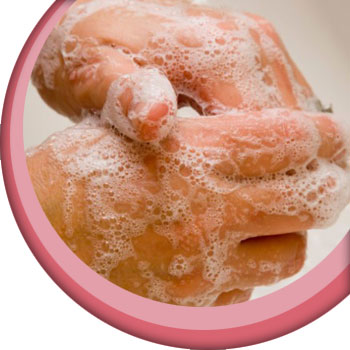Hospital-Acquired (Nosocomial)
Infections
The maintenance of high standards of hygiene within a veterinary practice is an important part of reducing the spread of infection and also antimicrobial resistance. It will minimise the spread of resistant bacteria between patients, and also reduce rates of exposure to infection. For many practices this may form part of their control programme to prevent hospital-acquired infections (HAIs).
HAIs are infections caused by organisms that are acquired by a patient during hospitalisation. They are often caused by infection with multidrug resistant bacteria.34,35 They are well documented in human medicine, and are increasing in prevalence in veterinary medicine, probably due to:34,35

- Performance of more invasive surgical procedures
- Increased use of antimicrobials and immunosuppressants
- Increased use of invasive devices
- Increased use of intensive care practices
- Longer duration of hospitalisation
Various species of bacteria can cause HAIs, and these can be intrinsically pathogenic e.g. Salmonella or they may be normal resident flora acting as a pathogen having gained access to a normally sterile part of the body.35
Common types of HAI include bloodstream infections, urinary tract infections, pneumonia, surgical wound infections and infectious diarrhoea.35
The impact of HAIs may be a combination of three factors:
• Increased patient morbidity and mortality, for example a hospital outbreak of Salmonella typhimurium in horses resulted in a 44% case fatality rate.37
• Increased cost and anxiety for the owner.
• Zoonotic risk for veterinary practice staff and owners – many HAIs are caused by zoonotic agents and figures suggest as many as 25-50% of people exposed during an outbreak may become infected.38 Veterinary surgeons have also been found to have an increased carriage of methicillin-resistant Staphylococcus aureus (MRSA) compared to the normal population.34
Many HAIs may be acquired from the hospital environment rather than the patient’s own microbial flora.39 Examples of fomites identified as carrying nosocomial organisms include endoscopes, laryngoscope handles, stethoscopes, computer keyboards and thermometers.35 Practice staff may act as a reservoir for organisms such as MRSA,40 as well as carrying these organisms on their hands between patients.35
Control programmes to prevent HAIs
The aim of a control programme is to prevent the spread of infections to patients, owners and staff within the veterinary practice or hospital.34 A control programme should consist of:
• Effective hygiene practices to reduce exposure to bacteria. Hand-washing with antiseptics or wearing non-sterile gloves has been shown to reduce rates of HAIs.35 Use of personal protective equipment, cleaning and disinfection of the hospital environment, equipment and laundry, and appropriate waste management are also key to minimising the spread of bacteria.34 Click here to find out more about practice hygiene.
• Reducing host susceptibility through prudent antimicrobial use and vaccination where possible.34
• Surveillance – analysis of culture and sensitivity results from any HAIs can be used to inform antimicrobial usage practices.34,35 Such surveillance has been shown to improve recognition and prevention of HAIs in human medicine.38
• Education of veterinary staff in order to develop a greater awareness and understanding of HAIs.38
Disclaimer: Indications and doses may vary between products. The antimicrobials listed may constitute an off licence use of the product and as such should only be used according to the ‘Cascade’, further details of which are available on the RCVS, VMD and NOAH websites. Veterinary surgeons are advised to carefully check the Summary of Product Characteristics (SPC) before prescribing a product and obtain informed owner consent where required.

